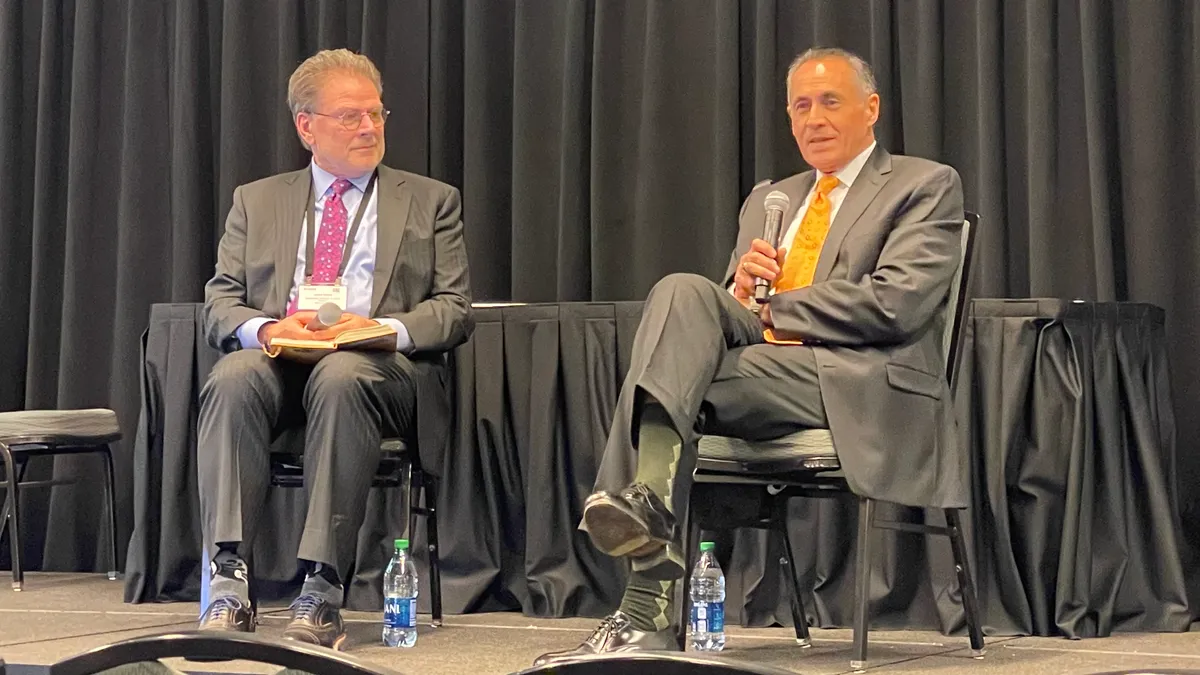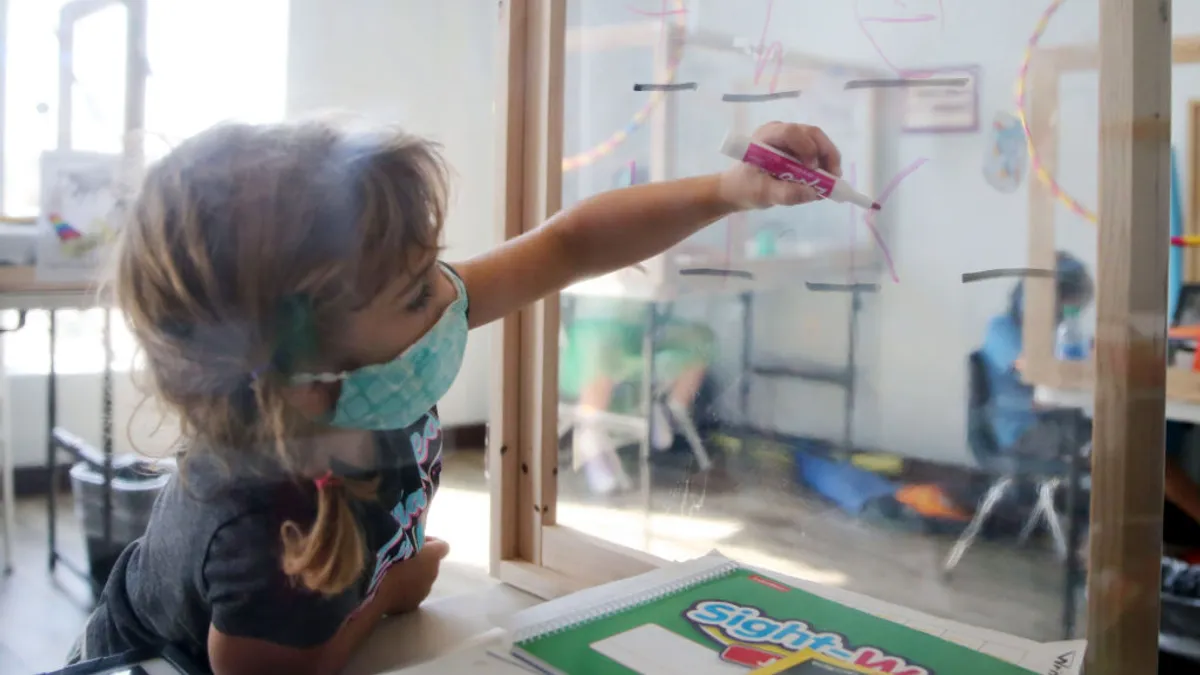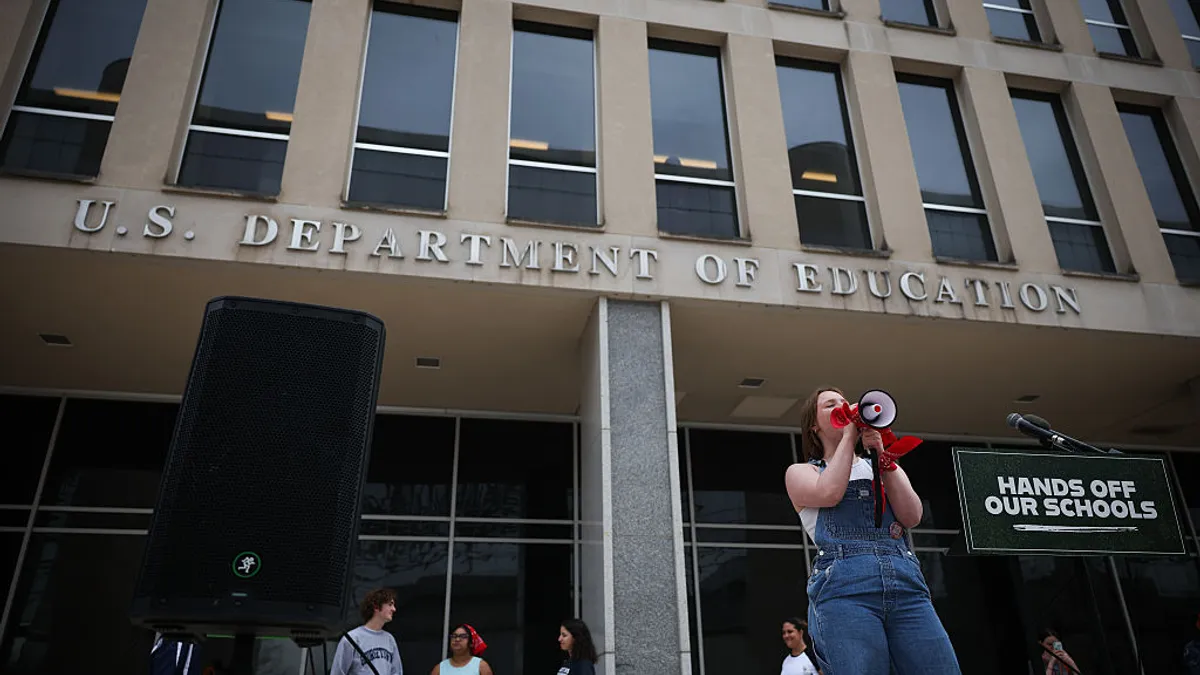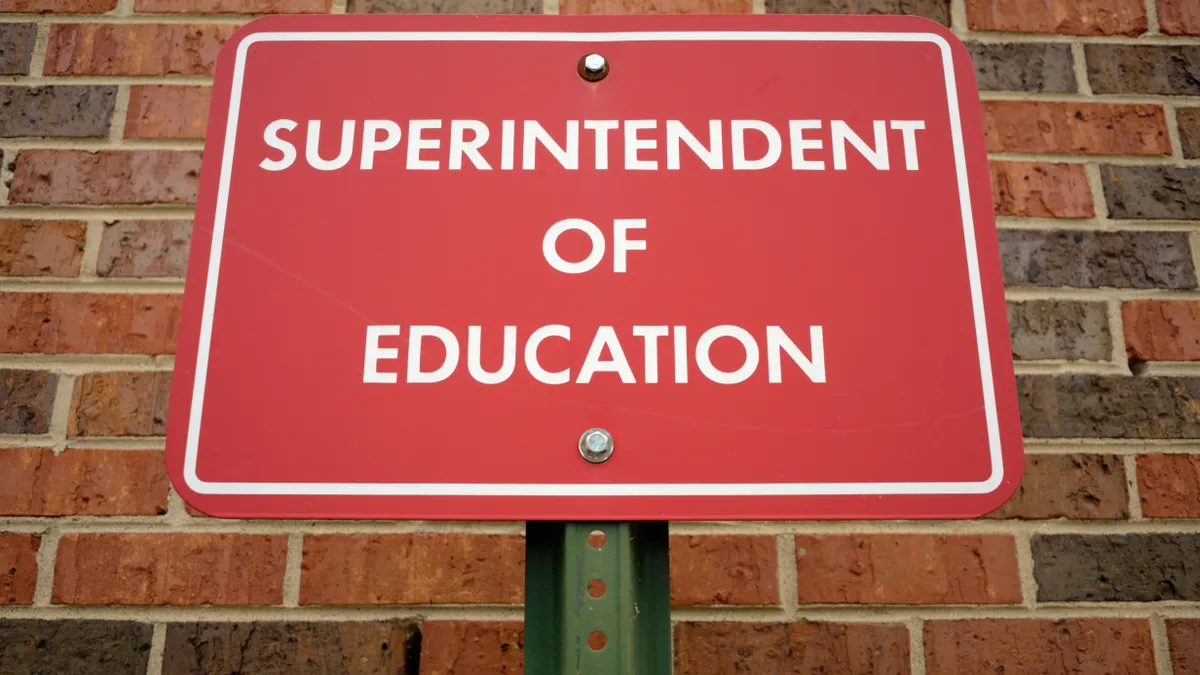UPDATE: March 7, 2022: More than a dozen Republican attorneys general filed a lawsuit against the Biden administration Friday calling for the release of correspondence associated with the National School Board Association's September letter requesting that President Joe Biden task federal agencies with intervening in "threats and acts of violence" on school officials. The controversial letter equated angry parents at school board meetings with "domestic terrorism."
In late September, a letter to President Joe Biden from the National School Boards Association, cosigned by former interim Executive Director and CEO Chip Slaven and President Viola Garcia, made headlines for describing aggressive parent protests over COVID-19 safety measures and curriculum controversies as “equivalent to a form of domestic terrorism and hate crimes.”
As a result, 19 mostly Republican-led states left the organization along with a half-dozen members of its 19-person board, and several states have since discussed forming a different school boards association.
Now the association’s new executive director, John Heim, is working to provide transparency on what exactly went wrong during the decision-making process on that letter — and hopefully win back some of the states that left. He detailed those efforts during a Friday afternoon discussion with AASA Executive Director Dan Domenech at the School Superintendents Association’s National Conference on Education in Nashville, Tennessee.
Along with acknowledging the mistake and issuing a formal apology in October, NSBA is now conducting an independent internal investigation to find out what to do to make it right and not repeat such a mistake.
Among the questions being weighed are whether there was potential collusion with the Biden administration. According to the New York Post, emails obtained by Fox News suggested Slaven had told other NSBA officers he had been in talks with White House staff regarding “additional information on some of the specific threats” to school boards, and that “he was writing a letter to provide information to the White House, from a request by Secretary Cardona.”
In a January statement to The Washington Times, the U.S. Department of Education denied involvement, saying, "While the secretary did not solicit a letter from NSBA, to understand the views and concerns of stakeholders, the department routinely engages with students, teachers, parents, district leaders and education associations."
The results of NSBA's independent investigation are expected to be available in March. The association's hope is that these efforts will win back some of the exiting states.
How the NSBA is organized is a key part of the challenge it currently faces. Unlike an association such as AASA, where individual school superintendents from across the nation are members, local school board members don’t belong to NSBA. They join their individual state school board associations, and those state associations are members of NSBA. There are no more than 49 total members in the association, as Hawaii has just one school board.
While Heim, who stepped into the executive director role in November, said his 20 years as a superintendent in Kansas had included pushback for decisions like closing school buildings or firing popular coaches, he has “never seen anything like the last two years.” Still, he said, that didn’t justify the extent the September letter went to.
“The letter we wrote went too far. What we said when we invoked the Patriot Act, when we talked about domestic terrorism — that was a mistake,” Heim said. “We should not have written it the way we did.”
Could split create two competing national associations?
Domenech expounded upon the important role superintendents and school boards play in tandem, noting that if you look at a district where you have a long-standing superintendent and school board, you’ll see a well-operating district.
Board members and superintendents have similar average tenures, and longer tenures for both can make a significant difference. Heim added it’s hard for a board to be successful without a good superintendent and vice versa.
Similarly, cooperation between AASA and NSBA has been critical to advocacy success over the years, Domenech said. “Ninety percent of the time,” both organizations are in the same place with their goals, and it makes a stronger case when they go to Capitol Hill together to advocate and discuss issues, he said.
“One of the concerns we have as we see what's happening, to some extent, is the fear that if there are going to be two school boards associations … one perhaps at this end of the spectrum and the other somewhere over here. That is gonna be very difficult for us,” Domenech said.
“Who's the organization we partner with to represent education?” he asked. “I think that's damaging. I think that reduces the effectiveness the organizations we represent would have.”
Sharing a quote from Oregon School Boards Association Executive Director Jim Green, Heim said, “If you wanted to do damage to public education, one of the first things that you want to do is try to split up the National School Boards Association.”
“I think, unfortunately, we set ourselves up to be in that position to allow that to happen to us,” Heim said.
Divisive politics at play
Domenech called attention to the amount now being spent to influence school board elections, saying that in the 27 years he had been a superintendent, he didn't remember those races being so competitive or well-financed.
“Basically, you had to go find someone to be on the school board,” Domenech said. “That’s not the case now. What we're seeing around the country is deliberate attempts for recall of school board members, or people who are out to run for the board to replace and gain, basically, the majority of the board.”
Of the millions being spent on these efforts, Domenech said, “That money more often than not is coming from outside, not from within a community. Then the next thing that happens is that the superintendent in that board is out, and now they're gonna bring in somebody that's going to be very much aligned with whatever their positions happen to be.”
Heim noted the nation has become more politically divided over the past five to six years and is now seemingly split down the middle, with both parties finding hot button wedge issues that can shave off another percentage point to sway centrists one way or the other.
While he expressed dismay that this has led to even school board elections becoming more partisan, Heim said he believes about 50% of the population to be actually in the middle and generally in agreement on issues involving schools. That general level of agreement, he said, never gets talked about because the 25% at either extreme are louder.
“If we look at it as Ds and Rs at the school board table, I think the kids lose when we use a system like that,” Heim said, referring to Democrats and Republicans.
Central to addressing the larger problem at the root of NSBA’s current crisis is improving how school boards and district leadership engage and communicate with communities to head off disagreements before they become bigger issues. Heim cited Adam Grant’s book “Think Again,” which focuses on the importance of communicating and building relationships so people can better understand one another.
“If I have a friend who has a completely different political view than I do, and I have a good relationship with that person, then we have a respectful conversation about where we differ,” Heim said. “But if I don't ever take the time to build a relationship with that person, and I don't take the time to listen to what their thoughts are, then it just suddenly becomes me against you. ‘You're wrong. You're stupid.’”
“It's so dependent upon [developing] relationships for us to make sure that doesn't happen,” Heim said.







 Dive Awards
Dive Awards















